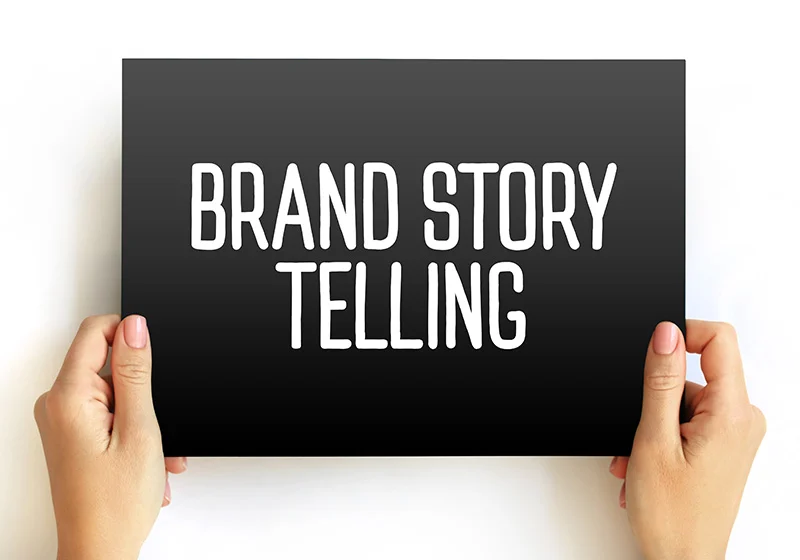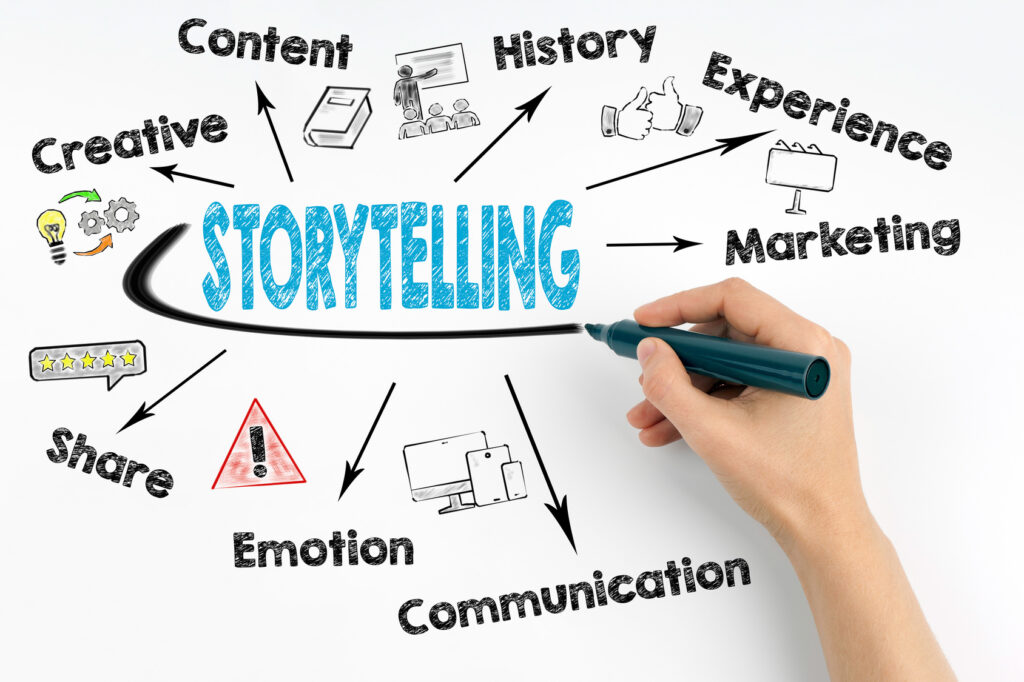Brands need more than just quality products or services to stand out In today’s competitive marketplace. They need to forge emotional connections with their audience. One of the most powerful ways to achieve this is through brand storytelling. But what makes a story compelling, and how can brands harness the power of storytelling to build deeper relationships with their audience? Let’s dive into the world of brand storytelling and uncover the secrets to creating narratives that resonate.
The Importance of Brand Storytelling
Storytelling is a fundamental human experience. Since the dawn of civilization, stories have been used to share knowledge, convey cultural values, and entertain. Stories engage our emotions, making them more memorable and impactful than mere facts or data. For brands, storytelling is not just a marketing tactic; it’s a way to humanize the brand, making it relatable and trustworthy.
When done right, brand storytelling can:
- Build trust and loyalty: Authentic stories foster trust and make customers feel valued.
- Differentiate the brand: Unique stories set brands apart from competitors.
- Engage and inspire: Compelling narratives capture attention and inspire action.
Elements of a Compelling Brand Story
To create an effective brand story, consider the following key elements:
- Authenticity: Authentic stories resonate because they are genuine and relatable. Share real experiences, challenges, and triumphs. Avoid exaggeration or deceit, as today’s consumers can easily spot inauthenticity.
- Character: Every great story has memorable characters. In brand storytelling, these could be the founders, employees, or even the customers. Highlight the people behind the brand, showcasing their personalities, values, and journeys.
- Conflict: Conflict drives narrative tension and keeps the audience engaged. In a brand story, this could be the challenges faced during the brand’s inception, market struggles, or obstacles overcome. Conflict adds depth and relatability.
- Resolution: After presenting the conflict, show how it was resolved. This part of the story demonstrates the brand’s resilience, innovation, and commitment. It offers a satisfying conclusion and reinforces positive perceptions of the brand.
- Emotion: Effective stories evoke emotions. Whether it’s joy, sadness, hope, or inspiration, emotional resonance is what makes a story memorable. Tap into universal human experiences and emotions to connect deeply with your audience.
Steps to Crafting Your Brand Story

- Define Your Core Message: Start by identifying the central message you want to convey. This should align with your brand’s mission and values. Ask yourself: What do we stand for? What makes our brand unique?
- Know Your Audience: Understand your audience’s needs, desires, and pain points. Tailor your story to address these elements, making it relevant and compelling for your target demographic.
- Choose the Right Characters: Decide who will be the protagonist(s) in your story. This could be the founder’s journey, an employee’s dedication, or a customer’s transformation through your product or service.
- Develop the Narrative: Outline the beginning, middle, and end of your story. Introduce the characters and setting, present the conflict or challenge, and conclude with the resolution. Ensure there’s a logical flow and that each part of the story builds upon the last.
- Incorporate Visuals: Visual elements like photos, videos, and infographics can enhance your story. They provide additional context and make the narrative more engaging. Consider using behind-the-scenes footage, customer testimonials, or illustrative graphics.
- Distribute Across Channels: Share your story across multiple platforms to reach a wider audience. Use your website, social media, email newsletters, and even offline materials like brochures or presentations. Tailor the format and presentation to suit each channel.
Examples of Successful Brand Storytelling
- Airbnb: Airbnb excels at storytelling by highlighting the unique experiences of its hosts and guests. Their “Belong Anywhere” campaign showcases diverse, real-life stories of people connecting through travel, emphasizing the brand’s mission to create a global community.
- Nike: Nike’s “Just Do It” campaign is a prime example of powerful storytelling. By featuring athletes who overcome adversity, Nike inspires and motivates its audience, reinforcing its brand message of determination and perseverance.
- Dove: Dove’s “Real Beauty” campaign focuses on celebrating natural beauty and promoting self-esteem. By sharing stories of real women, Dove challenges traditional beauty standards and connects emotionally with its audience.
Measuring the Impact of Your Brand Story
To gauge the effectiveness of your brand storytelling, consider the following metrics:
- Engagement: Track likes, shares, comments, and time spent on your content. High engagement indicates that your story resonates with the audience.
- Brand Sentiment: Monitor mentions and reviews to assess how your story impacts public perception of your brand. Positive sentiment suggests successful emotional connection.
- Conversion Rates: Measure how many viewers of your story take desired actions, such as signing up for a newsletter, making a purchase, or sharing your content. This indicates the story’s effectiveness in driving action.
- Customer Loyalty: Analyze repeat purchase rates and customer feedback to determine if your storytelling efforts foster long-term loyalty and advocacy.
Conclusion
Brand storytelling is a powerful tool that can transform the way your audience perceives and interacts with your brand. By crafting authentic, engaging narratives, you can build deeper emotional connections, differentiate your brand, and inspire your audience to take action. Remember, the heart of storytelling lies in its ability to connect on a human level, so always focus on authenticity, emotion, and relevance. Start telling your brand’s story today, and watch as it captivates and converts your audience.

